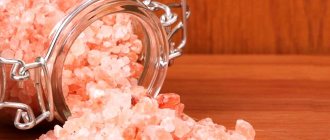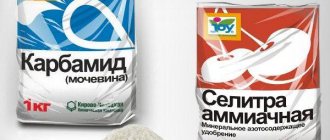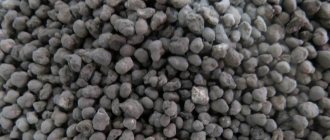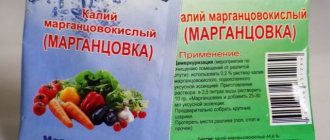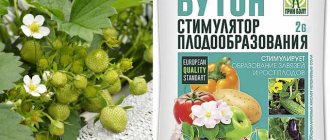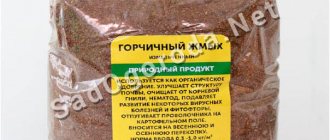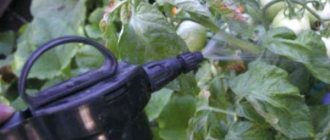An experienced gardener and gardener does not forget to use various fertilizers for his plants to help grow healthy, fertile plants. It is especially important to fertilize the soil for the plant in spring and autumn. On the modern market you can find many types of “feeding” for plants and soil. Urea is in particular demand - it is also called urea. As with all fertilizers, urea must be applied correctly so as not to harm the plant. Read the detailed instructions for using urea in the garden.
Urea as a fertilizer for the garden
Like any other nitrogen-containing fertilizer, urea is necessary for all plants. But most often it is used to treat trees and shrubs. Nitrogen directly affects the growth rate of fruits - berries and fruits. If this element is missing, then less green mass will be processed than necessary. The plant also does not develop in height, the fruits become smaller, the color of the leaves is less pronounced.
Plants can obtain nitrogen from the air and soil. But often its concentration in such cases is too low, and additional application to the soil and treatment of the garden with urea is recommended. When the compound gets into the soil, through chemical reactions it turns into ammonium carbonate in a few days. There is an important element in this reaction - the vital activity of soil bacteria, which make such a process possible.
The new compound will be easily taken up from the soil by plants, and no side effects will appear. At the same time, treating trees and shrubs with urea will prevent the development of infectious diseases and attacks by insect pests.
What is urea (urea)?
Urea, or carbamide, is a chemical compound called carbonic acid diamide. It looks like colorless, odorless crystals that dissolve in water, liquid ammonia and ethanol. Technical urea is white or yellow crystals. Pure urea contains more than 46% nitrogen.
Today, urea is used in a variety of sectors of the economy. In the medical industry, it is a raw material for the production of dehydration agents that remove water from the human body and are prescribed for cerebral edema. Urea is also used to produce sleeping pills.
The use of urea as a food additive E927b helps enhance the taste and aroma of food products. Most often it is added to baked goods, flour and used in the manufacture of chewing gum.
In the oil industry, urea is needed to remove paraffin substances from fuels and oils, as well as to clean smoke from the chimneys of boiler houses, waste disposal plants and thermal power plants from nitrogen oxides.
But the bulk of the substance is used for agricultural needs: the urea fertilizer, made from urea, supplies nitrogen to the soil, which significantly increases its fertility and, therefore, contributes to an increase in crop yields. For example, feeding wheat with urea increases its protein content, as in other grain crops. Urea is highly active and quickly absorbed by plants. The use of urea is necessary primarily at the stage of pre-sowing tillage and during the period when plants gain green mass, but fertilizing with urea during the budding period can subsequently negatively affect the amount of harvest.
Urea for the destruction of diseases and pests
Experienced gardeners know how many problems pests can cause, how the activity of such insects affects the condition of the garden, and how difficult it is to save the crop.
The use of urea helps stop the spread of pests throughout the area and makes it easier to care for plants.
Aphids on an apple tree.
Aphid
Urea is the granules from which the solution is prepared. To combat aphids, make a solution in the following proportion - 500-700 g of product per bucket of water. The consumption of the finished composition should be 2.5 liters per 10 sq.m. This treatment is carried out in the spring. The solution in the specified concentration can be used to treat plants not only against aphids, but also against weevils and apple blossom beetles.
In autumn, the procedure is performed slightly differently. Take 700 g of urea in granules per bucket of water, but additionally mix it with copper sulfate (50 g). The last substance is copper sulfate.
To combat aphids, it is important to spray not only the crown of the tree and its trunk, but also fallen leaves.
Colorado beetle
The pest's favorite crop is potatoes. There are different methods of combating the Colorado potato beetle, but the simplest option is treating the tops with a urea solution. To do this, the granules are mixed with water in equal proportions.
There is one more effective method. In early spring, bait is made from old tubers soaked in a urea solution. These potatoes are simply laid out in the area where they are going to plant the crop, and after some time they are collected along with the pests and destroyed.
Nematodes
Nematodes are worms that feed on plant roots, causing crop death. It is difficult to fight them - to do this you will first have to get rid of the infected plants. They should be dug up along with the soil and burned or a special hole should be made for them, which should be filled with urea (the dosage is 5 kg of granules per 1 cubic meter). Afterwards, the area is treated with urea in a proportion of 200 g per 1 sq.m.
If the site is not infested with pests, and measures are carried out for preventive purposes, urea is added to the soil in the fall when plowing the site (at the rate of 100 g per 1 sq.m.)
Lichen on an apple tree.
Diseases
Urea does not help with all diseases. But it is effective if the plants have scab, purple spot and monilial burn.
Treatment is carried out with a concentrated solution - 500 g of urea per bucket of water.
Methods of feeding plants with urea
The main need of plants for nitrogen occurs in the spring, when the green mass is actively growing. Currently, it is important to use carbamide (urea) using the root method.
To save money, you can add the substance directly into the hole.
If the moment was missed and signs of chlorosis appeared on the leaves during growth, the fastest way would be to spray the crops foliarly.
Autumn laying in the ground can be done, but it is not so effective, because during the winter nitrogen decomposes and its main part - ammonia - evaporates into the atmosphere, without bringing any benefit.
Only a small portion goes to microorganisms for nutrition. This is good because the amount of urease, an enzyme released when soil organisms die, increases in the soil.
Advantages and disadvantages
Urea has many advantages:
- Almost instantaneous onset of action, while the effect lasts for a long time.
- Versatility. The method works regardless of soil type or conditions (for example, the effectiveness will be the same for greenhouses and open ground).
- It is safe to use not only in spring or autumn, but also in summer. Although the proportions when preparing the solution must be observed, if they are accidentally violated, there will be no catastrophic consequences (for example, leaf burns). Violation of the recipe can only affect the effectiveness of spraying, but even then only slightly.
- A slight delay in the growing season when spraying trees and shrubs in spring. This slowdown even benefits the plants, since it protects the ovaries from sudden frosts. Therefore, fruit crops are sprayed first.
- Increased yields provided that the treatment is carried out during the period of bud formation, since urea protects fruit trees from pests.
Urea can also be applied to waterlogged soil. The urea solution has one more property - it allows you to quickly clear the area of old stumps, since it accelerates the process of their rotting.
Spraying with urea also has disadvantages, although they are few. They are mainly due to the fact that the fertilizer cannot be used simultaneously with nitrogen compounds, chalk and lime. But the most restrictions are associated with the incorporation of urea into the soil. Urea quickly disappears from the soil, and more worries arise related to organizing regular watering.
In addition, the addition of urea leads to an increase in acidity. Therefore, it is necessary from the very beginning to think through measures that will help compensate for this increase (much depends on what crops are planned to be planted on the site).
Urea - instructions for use
When is it better to treat the soil with urea?
The best time to add urea to the soil is during the flowering period of garden plants and before fruiting of garden crops.
By this time, the soil is sufficiently depleted, and signs of nitrogen deficiency in plants are most clearly visible. It is worth choosing calm weather after heavy rainfall: this will allow nitrogen to penetrate into the deeper layers of the soil. There is no point in using urea before planting, since nitrogen particles are quickly washed out of the soil by precipitation.
When does a plant need fertilizer?
During the development of a plant, it is important to pay close attention to its appearance. The condition of the plant will indicate the need to apply fertilizer. Having decided to use urea, you need to make sure that nitrogen fertilizers are necessary. Lack of nitrogen affects the appearance of the plant:
- The plant remains in the sprouting stage for a long time (does not grow into a mature plant);
- A mature plant has small shoots and bare branches;
- The leaves are unformed, have white pigmentation, and often fall off.
If the plant does not have the above signs, grows well and has a rich green color, do not rush to fertilize with urea.
Urea can also be used to prevent a lack of nitrogenous elements in the soil. There is no need to wait for obvious signs of nitrogen deficiency. Prevention will help improve the condition of plants and prevent a decline in yield.
When is the treatment carried out?
The timing of the procedure depends on the climatic conditions of the region. In spring, for example, you need to focus on the beginning of flowering of trees. In autumn, procedures are tied to the fall of leaves. Regardless of this, spraying is carried out 2 times a year.
Spring treatment
Early spring spraying of the garden can be done immediately after thawing. But often the procedure is carried out during flowering or immediately after it.
Much depends on the situation. So, the thicker the foliage on the trees, the sooner all procedures should be completed. For example, if there are young leaves on pears and plums, treatment can be carried out even in late spring or early summer.
Early spraying has its advantages, since it is an effective preventive measure against various pests and at the same time protects young shoots from freezing.
Autumn processing
When spraying fruit trees in autumn, it is important to ensure that the urea solution gets evenly over the entire surface of the crown and the area of soil in the tree trunk circle. This will help protect plants, increase their immunity so that they can survive the winter, and neutralize potential foci of infectious diseases.
The procedure is usually carried out after the leaves fall. If the plant has signs of disease, then additionally spray the trunks and fallen leaves, increasing the standard concentration of the solution. The optimal time for the procedure in most regions is mid-November, and in some the end of the month. Earlier treatment will only lead to leaf burns and frost resistance will decrease.
Harm or benefit
If the fertilizer is used as intended, it will give the desired result. The positive aspects of using urea include:
- does not allow phytoburns of foliage,
- works at any phase of cultural development,
- easily and quickly absorbed,
- suitable for any soil,
- increases the yield,
- It fights well against various types of insect pests.
And there are not so many negative nuances:
- it is forbidden to mix with superphosphate, wood ash, limestone, calcium nitrate to avoid negative chemical reactions,
- with a high concentration of nitrogen elements in the soil, a strong decrease in seed germination is possible.
In autumn, urea can be used, but only in an empty garden, so as not to harm perennial crops. Although many farmers find it inappropriate to use it at this time of year due to its rapid breakdown and volatility. The result will be minimal.
How to prepare a urea solution for spraying trees
A urea solution is prepared in an amount depending on the purpose of use. Most often, 500-700 g per 10 liters of water, if we are talking about trees. For vegetables the dose is less.
In this case, urea must be diluted immediately in a container of suitable volume so that it is convenient to mix in it. It is best to immediately take a bucket. But it is also important to ensure safety, since you are working with toxic chemicals.
This is what carbamide (urea) looks like.
Description of fertilizer and composition
The substance is obtained as a result of the synthesis of carbon dioxide and ammonia, exposing the compounds to high temperatures. The result is white or grayish granules, the chemical formula of which looks like CO(NH₂)₂.
Urea has the highest (46%) nitrogen content, while the element is in amide form, easily absorbed by plant foliage.
Upon contact with the soil, nitrogen changes from amide to ammonium and then to nitrate form. The bottom line is that at the intermediate stage of “long nitrogen” the element cannot be absorbed by plants, but when it passes into the nitrate form, the root system quickly absorbs nitrogen. The rate of transition of nitrogen from “long” to “fast” directly depends on temperature: the higher the indicators, the faster the bacteria will work and the ammonium will turn into nitrate.
Urea is produced in polyethylene bags, packing granules in packaging of various sizes. Many people are interested in the question of whether urea and urea are the same thing or not. The answer is yes, which is why you can see both names on the packaging.
Also on sale are:
- urea in liquid form (chelates);
- Humatized urea in granules (dark color). The composition includes, in addition to nitrogen, humate additives that stimulate metabolism in plant tissues and eliminate the accumulation of nitrates.
Urea is an odorless fertilizer that dissolves well in water (it is advisable to use warm water).
Processing of fruit trees
Treatment of fruit trees is carried out only after removing dead branches and destroying pests that have settled in cracks in the bark. It is best to carry out the procedure early in the morning or evening to prevent sunburn.
Simultaneously with spraying, root feeding can be carried out. If a urea solution is used for this, then its concentration is 120-150 g per bucket of water for plums and cherries and almost twice as much for apple trees.
If organic fertilizers have already been added to the soil, fertilizing with urea can be carried out, but its amount should be reduced by 2-3 times.
Combination with other fertilizers
Urea has high acidity, so it cannot be combined with fertilizers that are designed to reduce it (lime, chalk, ash). As a result of this combination, excess salts are formed in the ground, and the benefits of fertilizing are minimized.
The degree of combination of urea with other fertilizers:
- Strictly not recommended: wood ash, gypsum, chalk, lime, dolomite flour, calcium nitrate, simple superphosphate.
- Quick application: phosphate rock and ammonium sulfate.
- Acceptable and suitable for storage: sodium, potassium and ammonium nitrate, potassium sulfate and potassium chloride, manure.
It is undesirable to combine urea with calcium nitrate and monophosphate at the same time, since all substances are acids. When several fertilizers with such properties are applied at once, acidification of the soil may occur.
Processing other plants and shrubs
Urea is also used to treat vegetable crops during the growth period. It is necessary when there is a lack of nitrogen, manifested in yellowing and curling of leaves, a small number of inflorescences and ovaries, etc. When spraying vegetable crops, the dosage is less than for fruit trees. On average - up to 40 g per bucket of water. The same proportions will be for most berry bushes, except gooseberries. It requires only 10 g per 10 liters of water.
Sometimes dry fertilizer is used for vegetables. Then it all depends on the culture. For example, for bell peppers and tomatoes - only 20-25 g per 1 sq.m. And for cucumbers and legumes, 5-8 g per 1 sq.m. is enough.

